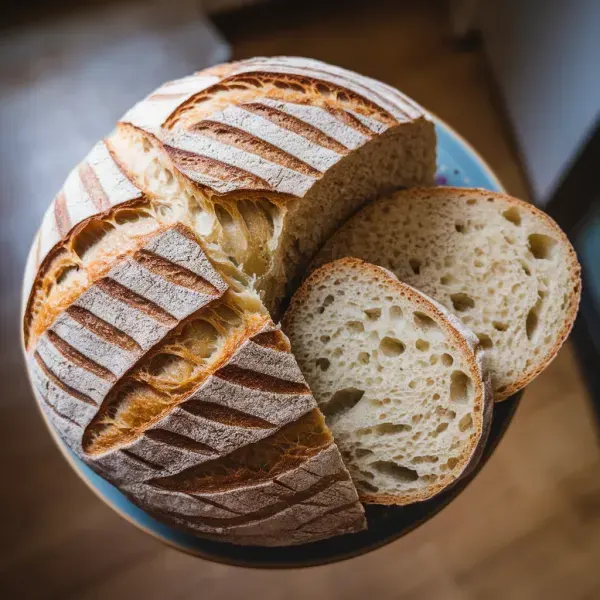
 1480 minutes
1480 minutesEmbark on a journey to perfect the timeless classic, artisan sourdough bread. From nurturing your very own starter to crafting the perfect levain and baking a beautifully textured loaf, follow our detailed guide. Uncover expert insights into each step to ensure your sourdough is nothing short of perfection.


Strong White Bread Flour, preferably organic or stoneground
0 oz
Tepid Water
0.25 fluid ounces
0 oz
1. Creating the Starter
Combine 50g flour with 50g tepid water in a container, ensuring no dry flour remains. Cover loosely and leave at room temperature for 24 hours.
2. Feeding the Starter
Add 50g flour and 50g tepid water to the mixture, fully incorporating. Cover and leave at room temperature for another 24 hours. Repeat this process on Day 3 and Day 4.
3. Maintaining the Starter
Once active (bubbly and yogurt-scented), your starter is ready. Maintain it by discarding half and feeding it with equal parts flour and water. Store in the fridge and reactivate 24 hours before use.
4. Levain Preparation
Mix 1 tbsp active starter with 100g flour and 100g water in a new bowl. Leave at room temperature until active; it should pass the float test in warm water.
5. Making the Dough
Combine the levain with 600g tepid water. Blend in 1kg flour to form a rough dough. Rest, covered, for 30 minutes to 4 hours in a warm place.
6. Dough Development
Dissolve salt in 50g water and work into the dough until smooth. Rest for another 15 minutes. Perform a series of dough stretches and folds over the next hour, with 20-30 minute intervals, then allow to rise for 2-3 hours until 30% larger and bubbly.
7. Shaping and Proofing
Turn dough onto a floured surface, divide in two, and form into balls. Rest uncovered for 30 minutes. Prepare floured proving baskets. Shape dough into tight balls, trapping air inside, and place seam-side up into baskets. Refrigerate overnight or up to 18 hours.
8. Baking
Preheat oven to 240°C (220°C fan-assisted, Gas Mark 9) with a lidded casserole dish inside. Invert dough onto parchment paper, score, and transfer to the hot casserole dish. Bake covered for 30 minutes, then uncovered for 10 minutes or until desired color. Cool on a wire rack.
A robust, active starter is crucial. It should be fed regularly and be at its peak activity when you begin. Look for it to have doubled in size with plenty of bubbles.
A longer fermentation at a lower temperature can develop more complex flavors. Look for the dough to grow by about 30% with signs of airiness and bubbles.
Steam in the oven is key for a good rise and crisp crust. Use a preheated Dutch oven or a pan of hot water to create steam.
Before adding salt or starter to your mix, let the flour and water sit for at least 30 minutes. This step improves gluten development and bread texture without additional kneading.
Employ a series of stretch and folds during bulk fermentation to develop gluten and maintain the dough's airy structure. Do this every 30 minutes for the first 2 hours.




Comments (0)